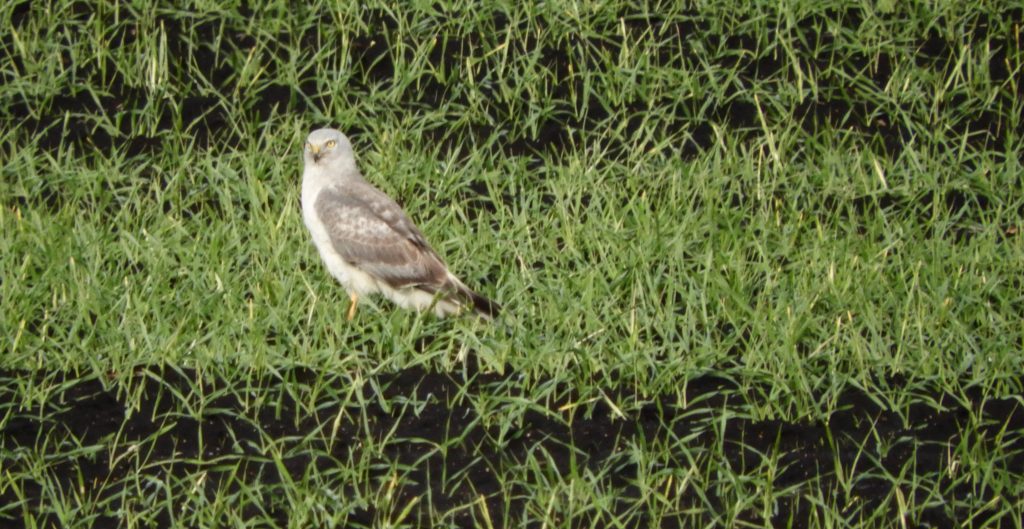 Haldimand County, ON. March 14 2022. In late January I wrote about Snow Buntings and the snow-blown field where we find them. We went back there today, knowing the Snow Buntings had probably left for their northern homes, but hoping to spot a reported group of Lapland Longspurs – but didn’t. The fields and scattered overgrown corners made for quite good birding nevertheless.
Haldimand County, ON. March 14 2022. In late January I wrote about Snow Buntings and the snow-blown field where we find them. We went back there today, knowing the Snow Buntings had probably left for their northern homes, but hoping to spot a reported group of Lapland Longspurs – but didn’t. The fields and scattered overgrown corners made for quite good birding nevertheless.
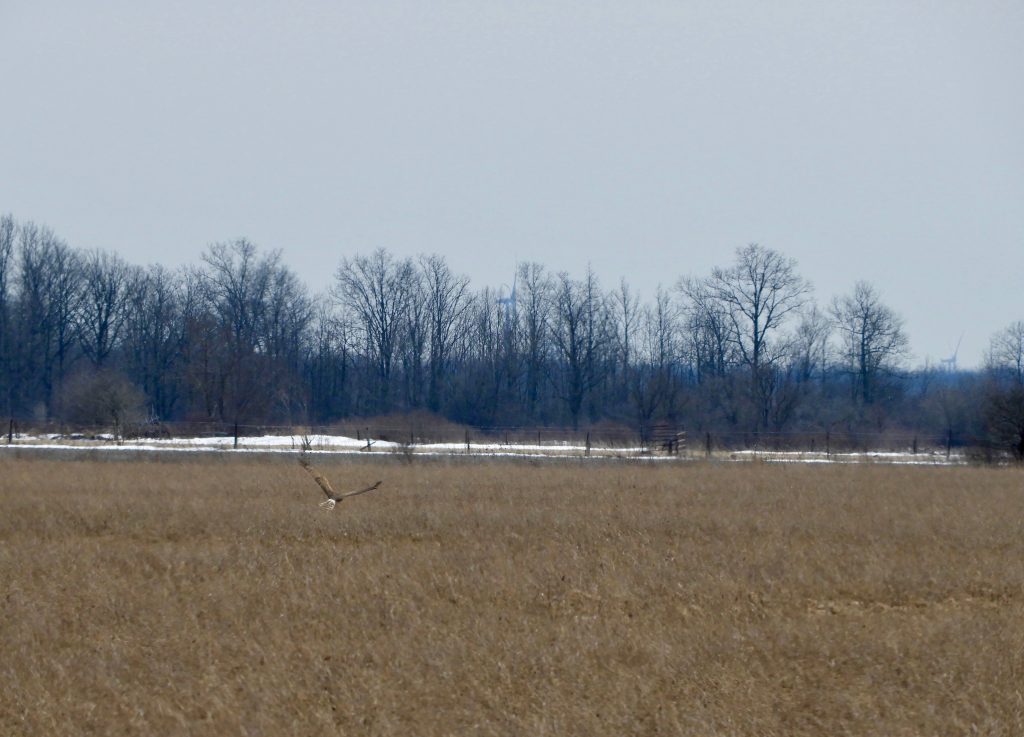 Bird of the Day, among a field of pretty serious contenders, was a young Northern Harrier. We spotted it first coming our way to our left, then it swept low across the road and carried on away over the brown, late-winter field. There is rarely time to get photos of sudden sightings like this but it all worked out and, against all odds, I got this one above.
Bird of the Day, among a field of pretty serious contenders, was a young Northern Harrier. We spotted it first coming our way to our left, then it swept low across the road and carried on away over the brown, late-winter field. There is rarely time to get photos of sudden sightings like this but it all worked out and, against all odds, I got this one above.
And that’s one of the things about Northern Harriers: we usually see them moving fast and low, far away over open fields, hunting for rodent prey. I have taken countless hopeless photos of distant harriers, although when I looked through my photo archives I was pleasantly surprised by a few.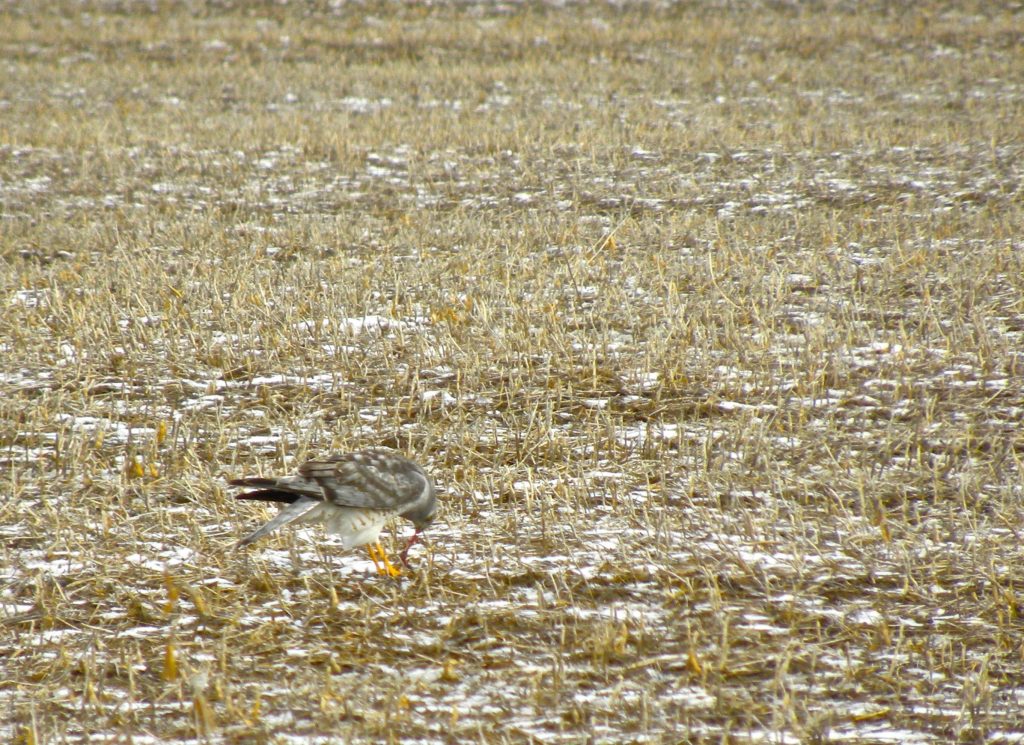
This male was photographed by me in midwinter 2011, he was understandably concerned about holding on to his meal despite my unnerving closeness. I am certain it is a male because of the predominance of the beautiful slate blue on its back and wings, females are generally brown, but I’m a bit puzzled about his age. That mottled brown on his back suggests that it may be a youngish male but the bold lemon-yellow eye colour says adult. Well, maybe it doesn’t matter all that much.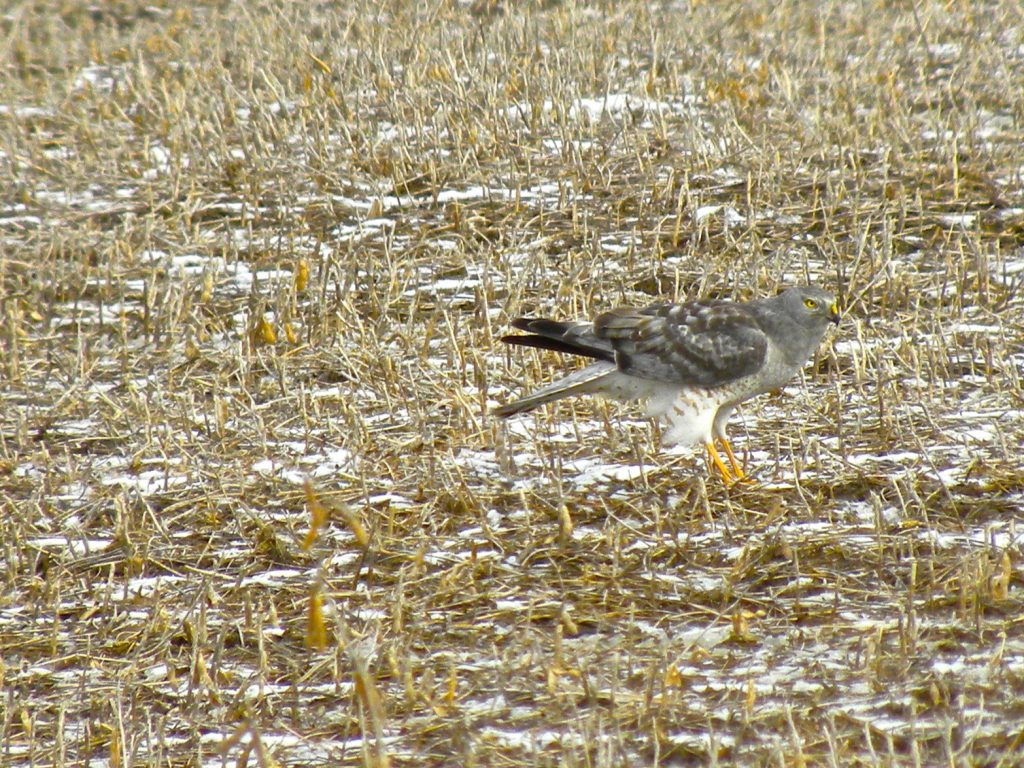
And what about those serious contenders? We started paying close attention when we spotted a Rough-legged Hawk perched on the top of a large hedgerow tree. Like harriers they always seem to be just too far away for a satisfying study. But we were quickly distracted by a small group of Eastern Bluebirds. They are always endearing creatures and the males among this group seemed vividly blue, perhaps it’s the approach of spring. It is easy to see how they, like the European Robin, became symbolic of happy days in less complex times, and before the encroachment of urban sprawl.
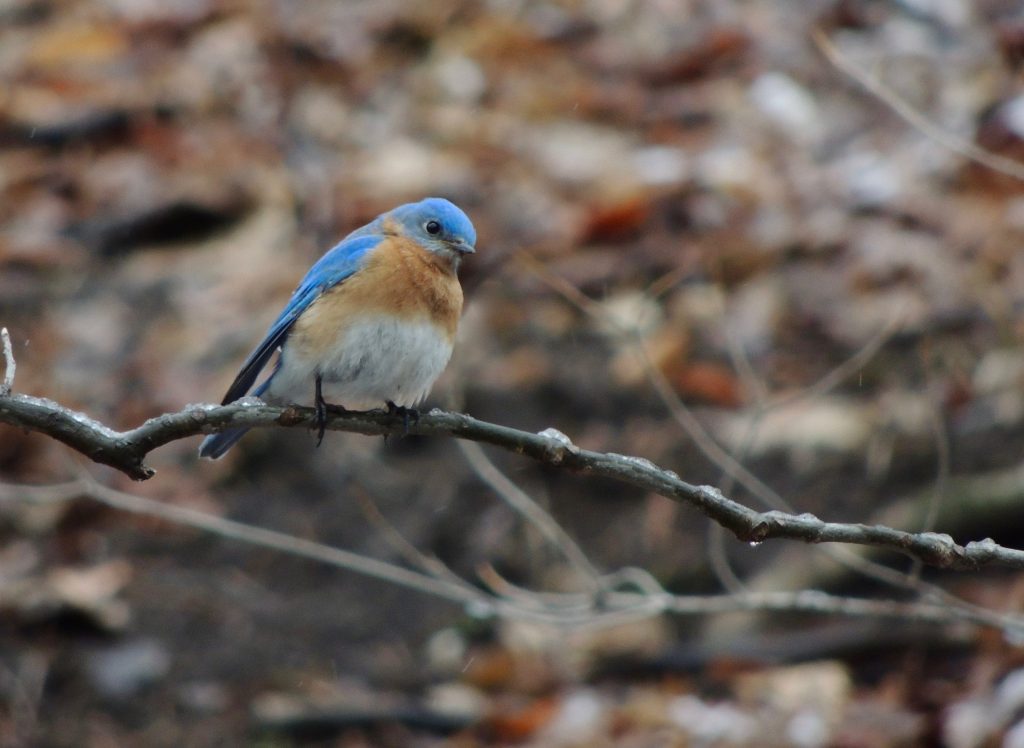
Three American Kestrels, two of them an obviously mated pair, were special. For some reason (and there are plenty of candidate reasons) the American Kestrel population seems to be in a steep decline in this part of the world while their Merlin cousins are increasing in number. Across the Americas, everywhere from Patagonia to Alaska, kestrel populations seem to be secure.
Hi Peter- I am afraid the Kestrels are falling victim to the increasing number of Cooper’s hawks, the prevailing theory around here. Nice shots of the Harrier!
A great birding day for you Peter! Your posts are always interesting reads.

